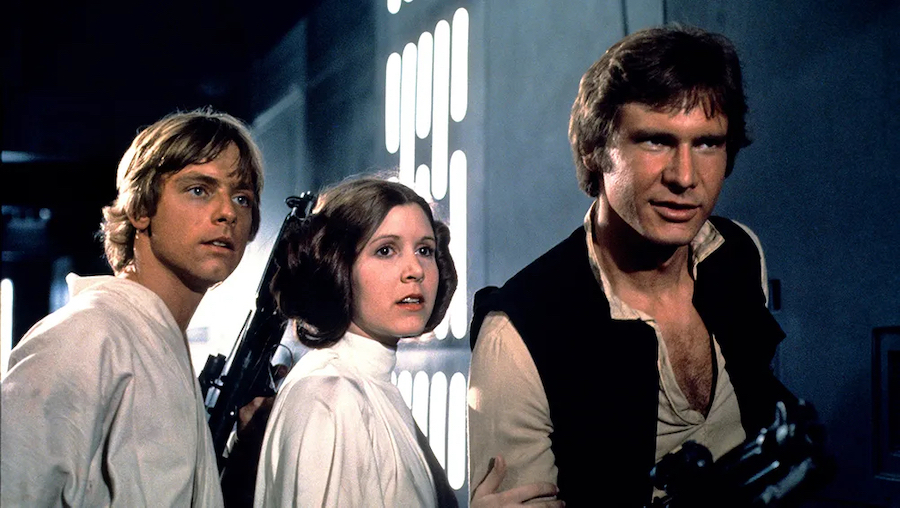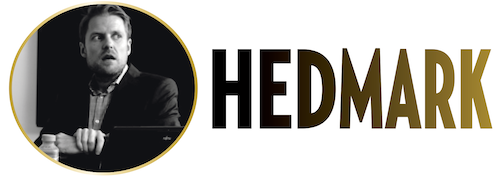
A LONG TIME AGO IN A GALAXY FAR, FAR AWAY…

Many people of my age grew up watching the Star Wars franchise. I never did; my movie nerd era didn’t begin until I was 16 and that’s probably when I saw those films. I understood why they had been so popular with young audiences and liked them a lot, but since I hadn’t spent years doing battle with imaginary lightsabers, there was no real emotional connection.
I have seen the first movie a few more times now and it’s dawned on me how perfectly structured it is; there isn’t a dull moment. George Lucas hasn’t made many films in his career, but Star Wars makes him look like a deeply experienced pro.
A princess with stolen plans
Somewhere in outer space, a galaxy is suffering from a civil war that pits a Rebel Alliance against the Galactic Empire. One of the rebel leaders is Princess Leia (Carrie Fisher) who has stolen the plans for the Empire’s latest space station, the Death Star, which has the capacity to annihilate planets. She’s captured by the dastardly Darth Vader and his Empire forces, but hides the plans in R2D2, a droid, that escapes along with another droid, C-3PO, to a desert planet.
They end up in the hands of a farmer and his nephew, Luke Skywalker (Mark Hamill). R2D2 accidentally reveals Leia’s message and Luke takes the droid to the person who was meant to see it, desert dweller Ben Kenobi (Alec Guinness). His real name turns out to be Obi-Wan Kenobi and he used to be a Jedi knight who fought alongside Luke’s deceased father in a previous war. Obi-Wan persuades Luke to help him rescue the princess; together with R2D2 and C-3PO, they enlist the help of adventurer Han Solo (Harrison Ford) and his ship, the Millennium Falcon…
Admirably simple and engaging
The movie opens with a bang as John Williams’s explosive music accompanies the now classic crawl explaining recent events in the galaxy. His music is a key asset, reinforcing the tension during action sequences and building our emotions for the characters, even when Lucas’s writing fails to satisfy. The dialogue is often cringe-worthy… but it doesn’t matter much in the end. Lucas has created a universe (after finding inspiration in “Flash Gordon” and The Hidden Fortress (1958)) that is admirably simple and engaging – this is good versus evil, but also a story about religion and how it can be used for good and bad. The film is terrific entertainment for children, but even in this first chapter, Lucas’s interest in the ultimate darkness is obvious; several sequences are quite cruel, not least the fate of Luke’s aunt and uncle.
The combo of Hamill-Fisher-Ford may not have impressed acting teachers at the time, but they’re wonderful together
The casting is about as perfect as it gets. An old pro like Guinness gives authority to Obi-Wan, James Earl Jones’s deep, dark voice becomes the very symbol of Vader’s wickedness (along with the character’s iconic, helmeted, black garb), and Peter Cushing’s presence should remind audiences of the old Hammer films, other thrilling productions that were made on a small budget to great effect. The combo of Hamill-Fisher-Ford may not have impressed acting teachers at the time, but they’re wonderful together.
The special effects wowed audiences and laid the foundation for the success of Industrial Light & Magic. In 1997, Lucas and his wizards revisited the Star Wars franchise and included new, juiced-up sequences with computer animation; the films were then re-released to theaters. Since very little was noticeably changed, it was hard to see why Lucas thought the bother was worth it. CGI or no CGI, this is still great fun.
Star Wars 1977-U.S. 121 min. Color. Widescreen. Written and directed by George Lucas. Editing: Richard Chew, Marcia Lucas, Paul Hirsch. Music: John Williams. Art Direction: Leslie Dilley, Norman Reynolds. Costume Design: John Mollo. Visual Effects: Richard Edlund, John Dykstra, and others. Cast: Mark Hamill (Luke Skywalker), Harrison Ford (Han Solo), Carrie Fisher (Princess Leia), Peter Cushing, Alec Guinness, Anthony Daniels. Voice of James Earl Jones.
Trivia: Alternative title: Star Wars Episode IV: A New Hope. Kurt Russell and Nick Nolte were considered for the part of Han Solo; Jodie Foster for Leia; and Christopher Lee for Cushing’s role. Followed by two sequels, starting with The Empire Strikes Back (1980), two prequels (Rogue One (2016), Solo: A Star Wars Story (2018)), and two new trilogies that began with Star Wars Episode I: The Phantom Menace (1999) and Star Wars: The Force Awakens (2015). Another spin-off film is Star Wars: The Clone Wars (2008). The making of the film was chronicled in the documentary Elstree 1976 (2016).
Oscars: Best Editing, Original Score, Art Direction-Set Decoration, Costume Design, Visual Effects, Sound. BAFTA: Best Film Music, Sound. Golden Globe: Best Original Score.
Last word: “As a kid, I read a lot of science fiction. But instead of reading technical, hard-science writers like Isaac Asimov, I was interested in Harry Harrison and a fantasic, surreal approach to the genre. I grew up on it. Star Wars is a sort of compilation of this stuff, but it’s never been put in one story before, never put down on film. There is a lot taken from Westerns, mythology, and samurai movies. It’s all the things that are great put together. It’s not like one kind of ice cream but rather a very big sundae.” (Lucas, American Film)
